You are here
America Chooses A President and Congress. Now It's Their Turn To Make Some Choices
No matter who wins the elections, the choice is between bipartisan progress to solve America's debt problem, or more gridlock and economic decline.
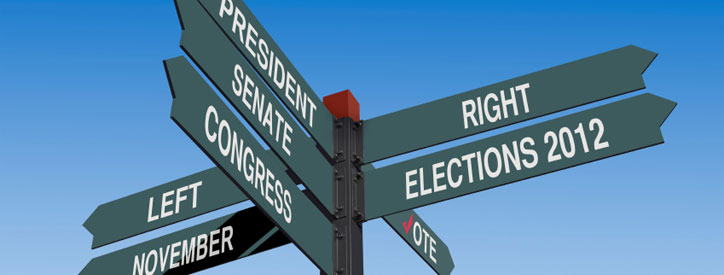
For too long in Washington, D.C., many Democrats and Republicans have staked out positions that don't allow for meaningful compromise. But with the election season winding down, the time has come for leaders in Washington to make a fundamental choice: They can embrace the opportunity to work together and find solutions to our growing national debt, or continue with partisan gridlock that will lead to competitive decline, and potential fiscal and economic crises.
Over the next several weeks, as the President and Congress confront the "fiscal cliff," they will have a big opportunity to make the right choice. Leaders on both sides of the aisle can make the right choices about a range of policy issues that have long-term implications for the federal budget and the U.S. economy.
- The choice is between a health-care system in which costs continue to rise unsustainably, pushing Medicare and Medicaid to the breaking point, taking a bigger bite out of small-business budgets and depleting family savings — or a sustainable system that reins in spending while maintaining or improving high-quality health care, and gives more cost certainty to seniors, businesses, employees, and the federal and state governments.
We spend much more per person on health care than other nations spend...
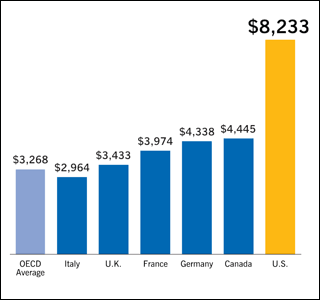
Sources: Data from OECD. Compiled by PGPF.
Note: Per capita health expenditures are for the year 2010, unless otherwise noted.
...Worse yet, health care is predicted to take up more and more of our economy.
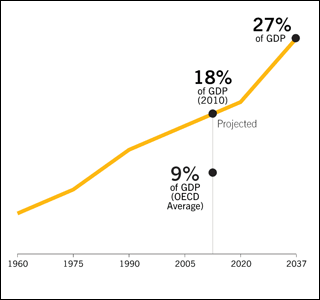
Sources: Data from the Centers for Medicare and Medicaid, National Health Expenditures, June 2012; and the Congressional Budget Office, The 2012 Long-Term Budget Outlook, June 2012. Compiled by PGPF.
Note: CMS data used for years 1960-2020. The 2037 figure reflects the latest available projections from CBO.
- The choice is between a tax code that is too complex, full of special-interest loopholes, deductions, exclusions and credits (also called tax expenditures), and doesn't produce enough revenue to meet our needs — or a new tax system that is simpler and pro-growth, broadens the base to provide the revenue we need to keep deficits in check, and reflects the best ideas of both parties.
The federal government gives up about as much revenue from tax expenditures (such as loopholes, deductions, exclusions and credits) as it collects in all personal and corporate income taxes. And tax expenditures cost more than Medicare, Social Security or Defense.
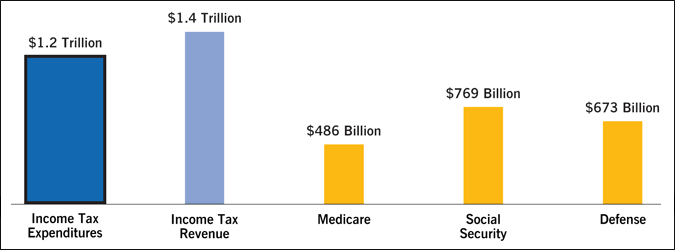
Sources: Data from the Congressional Budget Office, Updated Budget Projections: Fiscal Years 2012 to 2022, March 2012; Donald B. Marron, "How Large Are Tax Expenditures? A 2012 Update", Tax Policy Center Tax Facts, April 2012. Note: All figures reflect fiscal year 2012 projections. Medicare spending is net of premiums and payments from the states. Those receipts were $85 billion in 2012. Income tax expenditures and revenues include both individual and corporate income taxes.
- The choice is between defense spending reductions carried out haphazardly without regard to America's most important national security needs, which neither party likes — or a review of our national security priorities that lays a foundation for smart, sensible, strategic defense spending that responds to the threats of today and tomorrow, not yesterday.
Defense is a large portion of discretionary spending; we should review it based on today's threats, not those of the past.
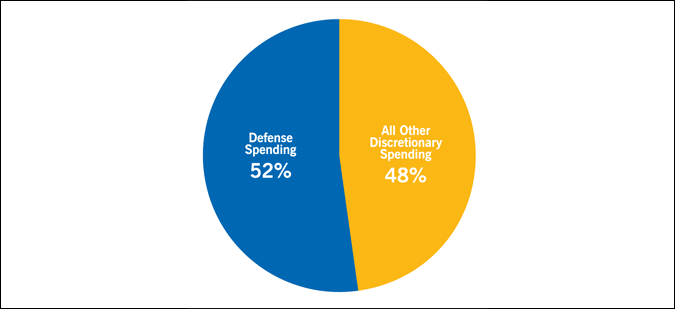
Sources: Data from the Congressional Budget Office, The Budget and Economic Outlook: Fiscal Years 2012 to 2022: January 2012. Compiled by PGPF.
Note: "All Other Discretionary Spending" includes veterans' affairs, education and training, transportation,justice, homeland security and other programs.
Both parties agree that our growing national debt is a problem. Now our leaders have a choice: bipartisan compromise and progress, or more debt and economic decline.
ADDITIONAL RESOURCES
Post-Election: The Fiscal Cliff and Beyond" — The Peter G. Peterson Foundation will convene elected officials and leading policymakers, along with five of the country's most respected think tanks, to discuss pragmatic solutions to America's impending fiscal challenges. Watch the event webcast on Friday, November 16th, 2012, live from Washington DC.
State of the Union's Finances — A citizen's guide explaining the enormous fiscal challenges facing America, based on the official financial statements of the U.S. government.
Charts Archive: Fiscal Solutions by the Numbers — Illustrative graphics prepared by the Foundation that help to visualize many of today's pressing fiscal issues.
PGPF on Facebook — Join other Peter G. Peterson Foundation supporters to discuss America's fiscal and economic future
